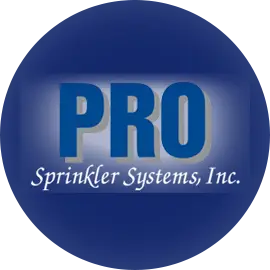Perform your golf course irrigation system repairs before it’s too late! Too often, golf course irrigation system problems are not identified until it’s too late. Suddenly, you’re faced with a large area of stressed or burnt-out turf on your course and no way to bring it back to life. Even with the most advanced irrigation installations, there will be times where controllers, system wiring or valves will fail to operate according to the automated plan. Your sprinkler heads will sit there idle, waiting for instructions.
When an irrigation system goes on strike, and you find yourself in need of golf course system repairs, the tendency is to look for a quick solution to bring the distressed areas back on line as soon as possible. Inexperienced technicians often focus their efforts on the most visible component in the system, the irrigation controller, placing the blame on a perceived problem within the complex electronics of the system’s brain. It’s a comforting thought that perhaps the irrigation can be revived by just changing out a few components within the controller, or the entire unit, as a way to quickly remedy the problem.
However, this method is generally a waste of time. Even though expensive components may be changed out, the system will usually continue to misbehave after each attempt. And the technician will become more and more frustrated by this waste of time and efforts chasing an unidentified problem.
This is where Pro Sprinkler Systems Inc. come in! Proudly servicing Westchester, Putnam, and Fairfield Counties, we take pride in servicing your property and providing the best product that we can. All of our technicians are fully trained to ensure quality work and a high standard of service. We will maintain your irrigation system for the life of the system. Even if we didn’t install your system, PRO Sprinklers can provide an assessment of your system to determine the cause and solution to your golf course irrigation system repairs. We can also provide recommendations on the best way to update and improve your system. Our goal is to make sure it is operating as efficiently as possible. You can feel safe knowing that your system will be cared for as if it were one of our own.
Step 1: Check the obvious. Before launching a thorough system diagnosis, our technicians will always check the obvious; Is the system water supply on? Are there isolation valves at the backflow preventer, pump station or in the mainline that are preventing water from flowing? Has the flow control on the valve been turned off? Has the “on/off/auto selector” on a valve-in-head sprinkler been left in the “off” position? Reviewing these factors up-front can save time and effort.
Step 2: Make sure you don’t have a programming error. If the zone operates fine manually using the controller’s manual mode, but does not operate automatically, this usually indicates a programming error rather than an electrical problem. We will review the controller’s programming guide and look for data-entry mistakes before assuming you have a major golf course irrigation system repair issue.
Step 3: Check field wiring.
If the controller, transformer and station outputs all work properly, the next place to check is the field wiring. And this happens to be the most common place where unforeseen problems occur.
At this point, our trained technicians will make sure the VOM is set to the correct resistance setting to make sure the unit provides accurate and measurable feedback, making sure to disconnect the wires they are testing from the controller terminal block so that your reading is specific to the wires in the field and not mixed up with feedback through the circuits of the controller.
The “ohm test” will send a small pulse of current from the battery in the VOM through the circuit to measure resistance. A normal reading is 20 to 60 ohms. These are all things our technicians will be looking for during an assessment of a golf course irrigation system repair.
Step 7: Check the valve solenoid.
The final step in a systematic approach is to decide whether diagnosed problems in the field wiring are related to the wiring and splices, or to the specific solenoid on the valve, or the valve-in-head sprinkler. At this point, our technicians will move to the actual location of the valve in the field and cut into the wires leading into the solenoid to take an ohm reading of the solenoid’s resistance. Typically, if the solenoid is bad, you will get a reading for a “short” or 1 to 10 ohms. (There is no need to test voltage at the valve because you have already “ohm tested” each circuit at the controller and you should know which zones have problems.)
If just reading this made your head spin, remember, Pro Sprinkler systems Inc is here to help, with a golf course irrigation system repair, or anything else. Click here or call us at: 914-277-3827 or 845-628-4484 to meet with one of our expert techs today!
